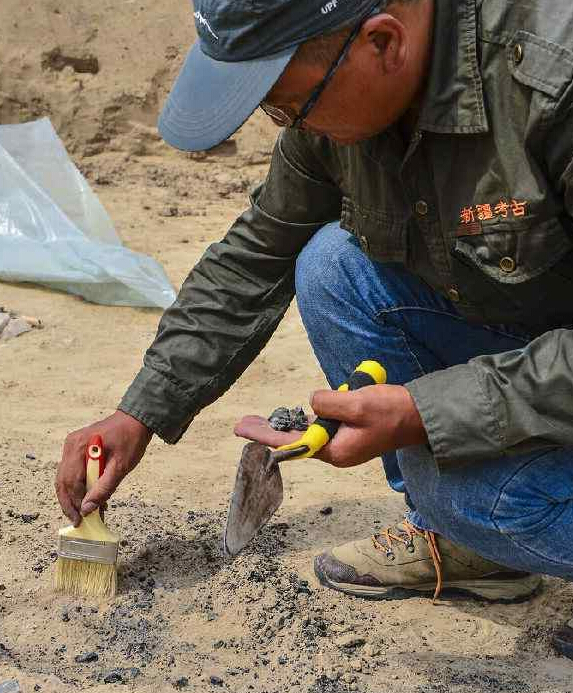Earliest evidence of coal fuel use found in Xinjiang

Wang Yongqiang, head of the excavation team, clears coal granules on the ground at site T2 of the Jiren Taigoukou Ruins in Ili Valley in Xinjiang. (PHOTO: XINHUA)
Experts from the Xinjiang Institute of Cultural Relics and Archaeology recently discovered the earliest example of coal used as a fuel source at the Jiren Taigoukou Ruins in Ili Valley in northwest China's Xinjiang Uygur Autonomous Region. They concluded that the site dates back to 3,500 years ago, which indicates that human beings used coal as fuel 1,000 years earlier than previously suggested.
At a burial site numbered T2 in the Jiren Taigoukou Ruins, there are black coal granules, cooking pits and coal ash on a floor cleared roughly 1 meter underground. At nearby site F1, the use of coal is also evident.
The archaeological excavation of the ruins started in June this year, so archaeologists hardly have had time to use Carbon-14 to date the coal and ash samples. However, according to bronze and porcelain artifacts as well as the structure of tombs excavated at the site, the preliminary conclusion of scholars is that human beings used coal as fuel 3,500 years ago.
Judging from unearthed relics, coal was first used in the Neolithic Age 6,000 to 7,000 years ago, when coal crystals were made into wearable accessories, said Ruan Qiurong, a research fellow and director of the Department of Prehistoric Archaeology at the Xinjiang Institute of Cultural Relics and Archaeology. Coal accessories were commonly found in tombs of the Spring, Autumn and Warring States Period (770-221 BC), but it was not until the Han Dynasty (206 BC-AD 220) that coal was massively used for production and living purposes.
The Jiren Taigoukou Ruins in the Ili Valley also features widely distributed, content-rich Andronovo Culture. Wang Yongqiang, head of the excavation team, said that since mid-June, the team has discovered nearly 60 tombs with a combined area of more than 400 square meters at the ruins.
Nearly 100 pottery, copper and stone objects were found in site T2 during tomb excavations. The site comprises four rooms, two cooking benches and a dozen coal ash pits. Comparisons of unearthed objects and other evidence from the tombs confirm that the newly discovered ruins were closely related to Andronovo Culture.
Andronovo Culture is a Bronze Age culture found in Siberia and Central Asia. It is named for the place where it was first discovered: a cemetery at Andronovo Village near Achinsk, Russia.
Ruan said that Andronovo Culture dates back to 4,000 to 3,000 years ago. It marked a time when hunting gave way to agriculture and animal husbandry, and copper smelting was developed. In recent years, a number of Andronovo ruins have been discovered in Xinjiang, he said.

 PRINT
PRINT CLOSE
CLOSE